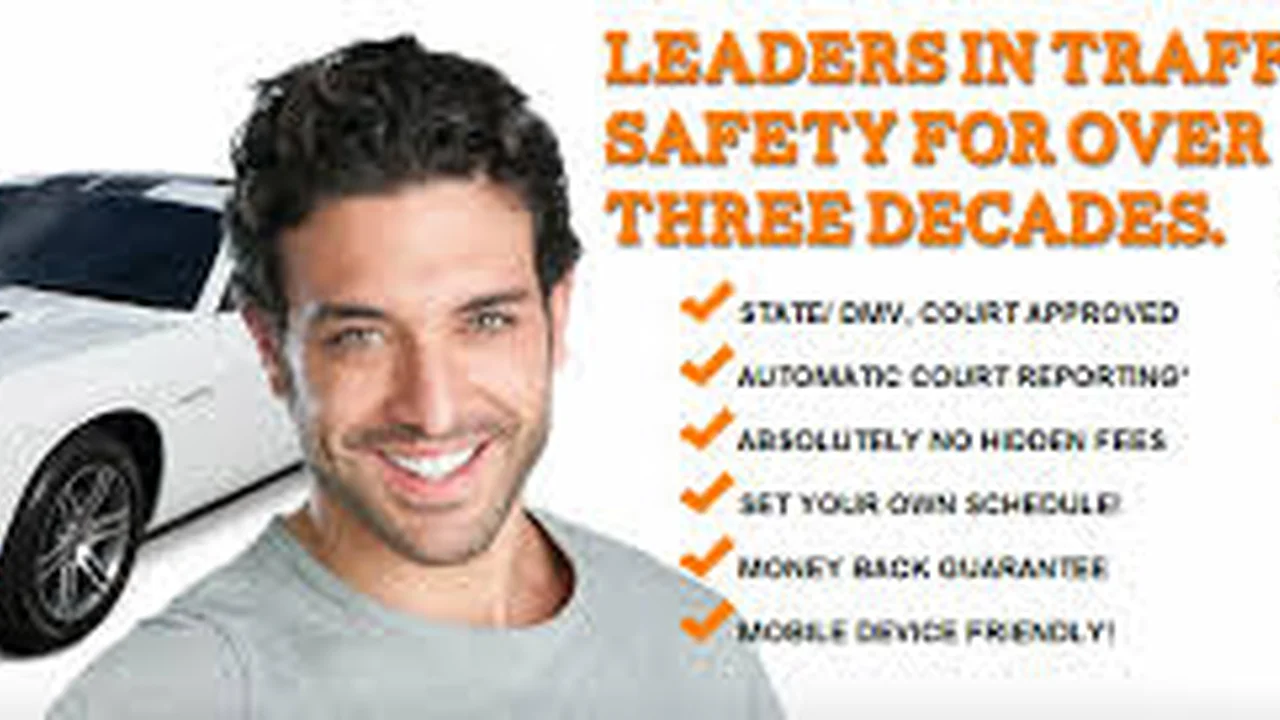Defensive Driving Courses: Lowering Premiums Through Education

Understanding How Defensive Driving Courses Impact Car Insurance Rates
Okay, so you're looking to save some cash on your car insurance, right? One seriously effective way is by taking a defensive driving course. But how exactly does that work? Well, insurance companies love it when you show them you're a safe driver. A defensive driving course proves you've gone the extra mile to learn safe driving techniques and understand the rules of the road. They see you as less of a risk, which translates to lower premiums. Think of it this way: you're proactively showing them you're less likely to get into an accident. And fewer accidents mean fewer payouts for them. It's a win-win!
The impact on your rates can vary depending on your insurance company, your driving record, and the specific state you live in. Some states even mandate insurance discounts for completing a defensive driving course. It's worth checking with your insurance provider beforehand to see what kind of discount you can expect. Don't be shy! Ask them all the questions. Find out if there are any specific course requirements they have too.
Benefits of Taking a Defensive Driving Course Beyond Insurance Discounts
Alright, so the lower insurance rates are a HUGE perk, but there's more to it than just saving money. You actually become a better driver! These courses teach you things like hazard perception, collision avoidance techniques, and how to handle different driving conditions (rain, snow, you name it). You’ll learn how to anticipate potential problems and react quickly and safely. It's not just about avoiding accidents; it's about becoming a more confident and aware driver. This can make your everyday driving experience less stressful and more enjoyable. Plus, you might even learn some things you never knew before, even if you've been driving for years!
Another benefit that often gets overlooked is point reduction. In some states, completing a defensive driving course can remove points from your driving record. Accumulating too many points can lead to license suspension, increased insurance rates, and other penalties. So, taking the course can help you keep your record clean and avoid those consequences. It's like a reset button for your driving history!
Choosing the Right Defensive Driving Course Online vs In Person
So, you're sold on the idea of a defensive driving course. Great! Now you need to figure out which one is right for you. You've basically got two options: online courses and in-person courses. Both have their pros and cons, so let's break it down.
Online Defensive Driving Courses: These are super convenient. You can take them at your own pace, from the comfort of your own home (or anywhere with an internet connection, really). They're usually cheaper than in-person courses too. The content is typically delivered through videos, animations, and interactive quizzes. This can be a great option if you have a busy schedule or prefer to learn independently. Just make sure the course is approved by your state's DMV or equivalent agency. Otherwise, it won't count towards insurance discounts or point reduction.
In-Person Defensive Driving Courses: These involve attending a classroom session with an instructor. This can be beneficial if you prefer a more interactive learning environment. You'll have the opportunity to ask questions, participate in discussions, and learn from the experiences of other drivers. In-person courses can also be more engaging for some people. However, they can be more expensive and require you to commit to a specific time and location. Think about your learning style and your schedule when making your decision.
Comparing Popular Defensive Driving Course Providers and Their Features
Alright, let's get down to brass tacks. Here are a few popular defensive driving course providers, both online and in-person, with a quick rundown of their features:
Online Options:
- IDriveSafely: This is a well-known online provider with courses available in many states. They offer a user-friendly interface, interactive lessons, and 24/7 customer support. They also have a money-back guarantee. Price: Generally around $25-$50 depending on the state. Best for: People who want a reputable and convenient online option.
- Improv Traffic School: This course uses humor to make the learning process more engaging. It's a good choice if you're looking for something a little different. They also offer a money-back guarantee and 24/7 customer support. Price: Similar to IDriveSafely, around $25-$50. Best for: People who learn best through humor and want a less traditional approach.
- Traffic School by IMPROV: This option is similar to Improv Traffic School but might have different state approvals. Always check before enrolling. Price: Varies by state, typically $20-$45. Best for: Those looking for a budget-friendly, humor-infused course.
- The Online Traffic School: Offers a straightforward, no-frills approach to defensive driving. It's often one of the more affordable options. Price: Usually the cheapest option, often under $20. Best for: Budget-conscious individuals who want a simple and direct course.
In-Person Options:
- AAA Driver Improvement Program: AAA offers in-person courses in many locations. These courses are taught by certified instructors and cover a wide range of topics. They're a good choice if you want a comprehensive and interactive learning experience. Price: Varies depending on location, but typically around $75-$150. Best for: People who prefer face-to-face instruction and want a reputable program.
- National Safety Council: The National Safety Council also offers in-person defensive driving courses. These courses are designed to improve driver safety and reduce the risk of accidents. Price: Similar to AAA, around $75-$150. Best for: Those seeking a nationally recognized safety program with experienced instructors.
Understanding State-Specific Requirements for Defensive Driving Courses and Insurance Discounts
This is super important! Each state has its own rules and regulations regarding defensive driving courses and insurance discounts. What works in California might not work in New York. Before you enroll in any course, make sure it's approved by your state's DMV or equivalent agency. You can usually find a list of approved courses on the DMV's website. Also, check with your insurance company to see if they have any specific requirements for the course. They might only accept courses from certain providers or require a certain number of hours of instruction. Doing your homework upfront will save you time and money in the long run.
For example, some states require you to take a specific type of course to remove points from your driving record, while others only allow you to take a course once every few years. Some states offer mandatory insurance discounts for completing a defensive driving course, while others leave it up to the insurance company's discretion. Don't assume anything! Always verify the requirements with your state's DMV and your insurance provider.
Step-by-Step Guide to Enrolling in and Completing a Defensive Driving Course
Okay, you've picked your course and you're ready to roll (pun intended!). Here's a quick step-by-step guide to getting started:
- Research and Choose a Course: Use the information we've discussed to find a course that meets your needs and is approved by your state.
- Register for the Course: Follow the instructions on the course provider's website or contact them directly to register. You'll likely need to provide your driver's license information and pay the course fee.
- Complete the Course: Attend the in-person sessions or complete the online modules at your own pace. Make sure to pay attention and take notes! You'll likely need to pass a final exam to receive your certificate of completion.
- Submit Your Certificate of Completion: Once you've completed the course, you'll receive a certificate of completion. Submit this certificate to your insurance company and your state's DMV (if required). This is how they'll verify that you've completed the course and are eligible for insurance discounts or point reduction.
- Enjoy Your Savings! Sit back, relax, and enjoy the lower insurance rates. You've earned it!
Maximizing Your Insurance Discount After Completing a Defensive Driving Course
So you finished the course, submitted your certificate, and now you're waiting for the savings to kick in. Here are a few tips to make sure you're getting the most out of your insurance discount:
- Shop Around for Insurance: Even with the discount, it's always a good idea to shop around and compare rates from different insurance companies. You might be able to find an even better deal elsewhere. Websites like NerdWallet and The Zebra can help you compare quotes from multiple providers.
- Maintain a Clean Driving Record: The discount is only good as long as you maintain a clean driving record. Avoid tickets and accidents to keep your rates low.
- Ask About Other Discounts: Many insurance companies offer other discounts, such as discounts for having multiple policies, being a safe driver, or having anti-theft devices installed in your car. Ask your insurance provider about all the discounts you're eligible for.
- Review Your Policy Regularly: Review your insurance policy at least once a year to make sure you're getting the best possible coverage and rates. Your needs may change over time, so it's important to keep your policy up-to-date.
Defensive Driving Techniques You'll Learn in a Course and How to Apply Them
Okay, let's talk about some actual driving skills! Defensive driving courses aren't just about memorizing rules; they teach you practical techniques to stay safe on the road. Here are a few examples:
- Scanning: This involves constantly scanning your surroundings for potential hazards. Look far ahead, check your mirrors frequently, and be aware of what's happening around you.
- Cushion of Safety: This means maintaining a safe following distance between you and the car in front of you. The rule of thumb is to leave at least three seconds of following distance in good weather conditions, and even more in bad weather.
- Hazard Perception: This involves recognizing potential hazards before they become a problem. Look for signs of trouble, such as brake lights ahead, pedestrians crossing the street, or cyclists weaving in and out of traffic.
- Communication: This means using your signals and headlights to communicate your intentions to other drivers. Signal your turns well in advance, use your headlights when visibility is poor, and honk your horn if necessary to warn other drivers of danger.
- Speed Management: This means driving at a safe speed for the conditions. Adjust your speed based on the weather, traffic, and road conditions. Slow down in bad weather, heavy traffic, or when approaching curves or intersections.
Specific Scenarios Where Defensive Driving Skills Can Prevent Accidents
Let's get real. Here's how these techniques play out in the real world:
- Scenario 1: Rainstorm on the Highway: You're driving on the highway during a heavy rainstorm. Visibility is reduced, and the road is slippery. By using scanning, you notice brake lights flashing ahead. You increase your following distance (cushion of safety) and reduce your speed (speed management). As you approach the brake lights, you see that a car has spun out of control. You're able to safely steer around the accident thanks to your increased following distance and reduced speed.
- Scenario 2: Approaching an Intersection: You're approaching an intersection with a green light. You're tempted to speed up to make it through the intersection before the light turns red. However, you use hazard perception and notice a pedestrian starting to cross the street against the light. You slow down and prepare to stop, allowing the pedestrian to cross safely.
- Scenario 3: Merging onto the Highway: You're merging onto the highway from an on-ramp. Traffic is heavy, and it's difficult to find an opening. You use communication (your turn signal) to indicate your intention to merge. You also use scanning to find a gap in traffic. When you find an opening, you accelerate smoothly and merge safely into the flow of traffic.
The Long-Term Impact of Defensive Driving on Your Driving Habits and Safety
Taking a defensive driving course isn't just a one-time fix; it can actually change your driving habits for the better. By learning and practicing safe driving techniques, you'll become a more aware and responsible driver. You'll be more likely to anticipate potential hazards, react quickly and safely, and avoid accidents. This can lead to a lifetime of safer driving and fewer accidents. And that's something worth investing in!
Think about it: you're not just learning how to avoid accidents; you're learning how to be a better driver overall. You'll be more confident behind the wheel, less stressed out by traffic, and more likely to arrive at your destination safely. Defensive driving is an investment in your safety, the safety of your passengers, and the safety of everyone else on the road.
Advanced Defensive Driving Techniques for Experienced Drivers
Even if you've been driving for years, there's always more to learn. Here are some advanced defensive driving techniques that can help you stay safe on the road:
- Space Management: This involves creating and maintaining a safe space around your vehicle. This includes maintaining a safe following distance, staying out of other drivers' blind spots, and positioning your vehicle in the lane to maximize visibility.
- Risk Assessment: This involves constantly assessing the risks associated with your driving environment. Consider factors such as the weather, traffic, road conditions, and the behavior of other drivers.
- Evasive Maneuvers: This involves learning how to safely avoid a collision if one becomes unavoidable. This might involve braking hard, steering sharply, or accelerating quickly.
- Skid Control: This involves learning how to control your vehicle if it begins to skid. This requires understanding the principles of vehicle dynamics and knowing how to steer and brake properly.
- Emergency Braking: This involves knowing how to brake effectively in an emergency situation, using techniques like threshold braking or ABS (Anti-lock Braking System) braking.
The Role of Technology in Modern Defensive Driving Courses
Technology is playing an increasingly important role in modern defensive driving courses. Many courses now incorporate simulators, interactive videos, and other technology-based tools to enhance the learning experience. These tools can help drivers practice safe driving techniques in a safe and controlled environment. They can also provide drivers with personalized feedback on their performance. Some vehicles even have advanced driver-assistance systems (ADAS) that can help prevent accidents. These systems include features such as automatic emergency braking, lane departure warning, and blind spot monitoring. While these systems can be helpful, it's important to remember that they're not a substitute for safe driving habits. You still need to be alert and attentive behind the wheel.
Debunking Common Myths About Defensive Driving and Car Insurance
Let's clear up some misconceptions:
- Myth: Defensive driving courses are only for bad drivers. Fact: Defensive driving courses are beneficial for drivers of all skill levels. They can help even experienced drivers improve their skills and stay safe on the road.
- Myth: Taking a defensive driving course is a waste of time. Fact: Defensive driving courses can save you money on your car insurance, reduce points on your driving record, and improve your driving skills.
- Myth: All defensive driving courses are the same. Fact: Defensive driving courses vary in content, quality, and state approval. It's important to choose a course that meets your needs and is approved by your state's DMV.
- Myth: My insurance rates will automatically go down after taking the course. Fact: You need to submit your certificate of completion to your insurance company to receive the discount. It's not automatic.
Resources for Finding Approved Defensive Driving Courses in Your State
Here are some helpful resources:
- Your State's DMV Website: This is the best place to find a list of approved defensive driving courses in your state.
- Your Insurance Company: Your insurance company can also provide you with a list of approved courses.
- Online Search Engines: You can use online search engines like Google or Bing to find defensive driving courses in your area. Just be sure to verify that the course is approved by your state's DMV before enrolling.
- AAA or National Safety Council Websites: These organizations often offer defensive driving courses and can provide information on approved courses in your state.
:max_bytes(150000):strip_icc()/277019-baked-pork-chops-with-cream-of-mushroom-soup-DDMFS-beauty-4x3-BG-7505-5762b731cf30447d9cbbbbbf387beafa.jpg)






